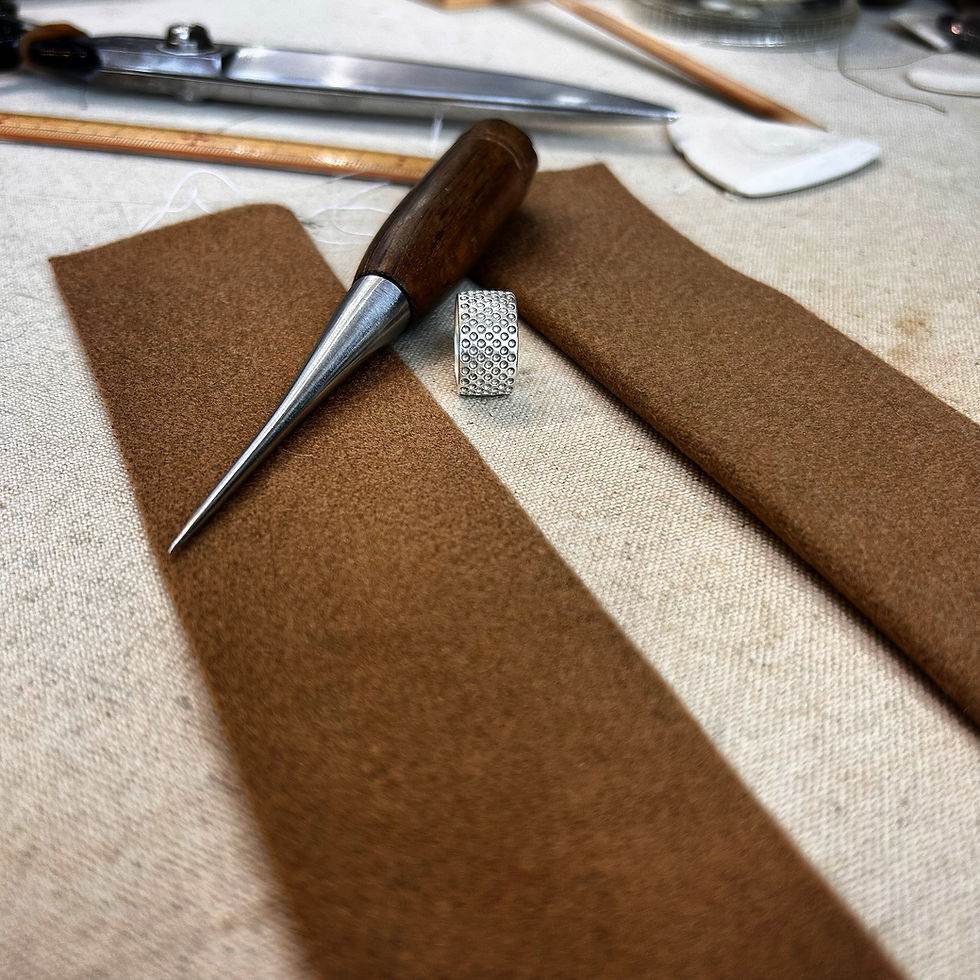Made To: Work (part 2) Scenes from a Tokyo Tailor Shop
- 2023年11月18日
- 読了時間: 3分
Another Sunday came and went.
The inevitable drum beat of change is overwhelmingly loud once again.
I fucking hate that sound.
Unfortunately, I am unable to escape it, so I come to Kamata to bathe in calm, and sit again at the feet of a person who makes life more tolerable.
Having a bit of understanding in place of the usual “suck it up, buttercup” is a comfort.
Today our goal was to build large welt pockets that slant just enough at the sides of the goat coat to bury one’s hands in.
I’m not sure if it’s because I am a woman and we rarely receive properly sized pockets in our ready to wear garments, or if there is something else I find entrancing about building receptacles to hide things in, but there is nothing that makes me more giddy than making pockets.
We started with the welts.

I find the inner workings of garments surprising. When we make a welt for a breast pocket, we use two layers of thin cotton silesia as a kind of reinforcement, or interlining in the welt. I’d gotten used to this and assumed there would be a similar soft reinforcement in the large welts that would go at the mouth of the luxurious “box pocket”.
A funny thing about my experience in tailoring is that I have studied my entire 4 years in Japanese. “Box Pocket” is a direct translation and I have absolutely no idea what you call this type of pocket in English.
Instead of the thin cotton, Hirokawa went straight for the stiff linen belt canvas. This, wrapped in the teddy bear plush cashmere made the perfect welt. I guess after 60 years, he knows what he’s doing.
I stitched the front of the pocket bag cloth piece to the welt, ironed it into submission, and found the placement on the front of the coat.

After stitching them onto the coat, I took a deep breath and slashed through the front parts to turn out the welt. Hirokawa showed me a lovely trick (that I promptly forgot how to do) that allows all of the cloth to line up perfectly, creating a completely smooth join between the welt and facing. I split the seams with the iron, steamed them down, and pick stitched the welts into place.

As it was my first time making these larger welt pockets, I wasn’t sure the exact dimensions. Per usual, Hirokawa had that information stored right at the front of his brain. He quickly measured it out, and marked it for me to copy on the opposite side.

I zipped around the pocket bag with the sewing machine and decided to admire the pocket bag cloth for just a moment. I didn’t want to use regular old silesia for pockets that are supposed to be a delightful refuge from the cold, so I asked around at the “coat innards store” and found this wooly dream.
I feel extremely lucky to live in Tokyo for many reasons, but it has been brought to my attention that it’s really the only place in the world where not only one, but two coat innards stores exist. It’s so nice to have a place where you can bump into other tailors you haven’t seen in a while, but also touch, arrange and fully understand the materials you are buying before you start working with them. Kanda is also home to some really authentic Indian food, but that’s a story for another day.

After constructing the pocket bag, it was time to think about canvassing this coat. This garment is oversized and only particularly fitted in the shoulders, so the canvas did not require much in the way of shape. It’s largely flat, aside from some witchcraft we accomplished in the shoulder and neck line.

While it’s a bit boring, it certainly lends some body and structure to the drape of the cashmere.
I basted the front parts to the canvas, taped the lapel in preparation for pad stitching, and then flipped it back over to cut out the canvas around the pockets we just made.

My very favorite part of today’s entire process was stitching the pocket bag to the canvas.
I looked up and the clock said 4:30pm. It gave me just enough time to pick stitch the top of the welts, and admire the nap on this cloth before I tidied up and asked if I’d forgotten anything.

We parted ways with the ritual “ashiato dake”, and made plans for our next meeting.
Despite what has to change, these Sunday afternoons have been the highlight of some very difficult weeks. I feel so grateful for having had them.

Comments